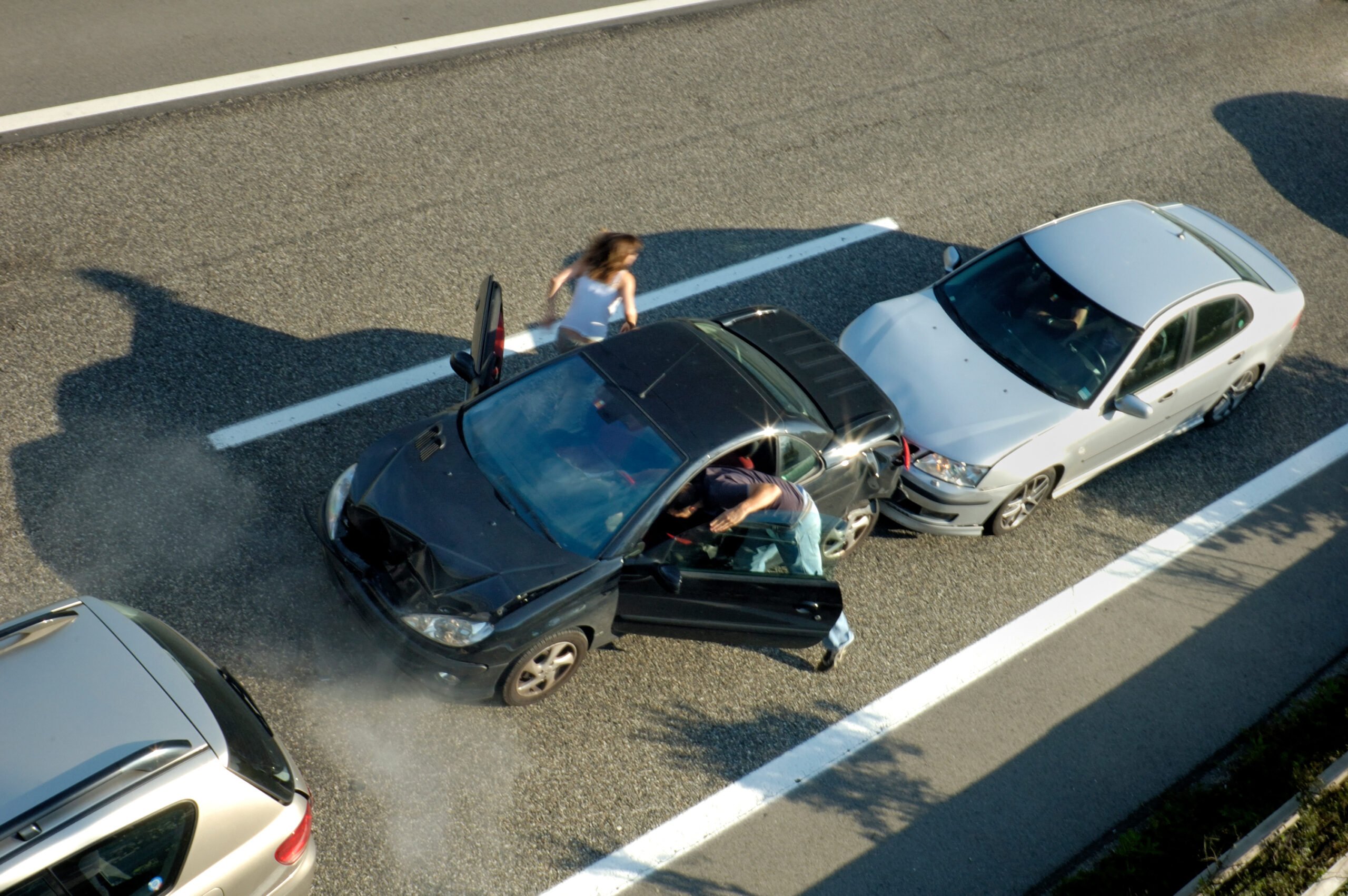RECENT POSTS
Categories
Who is at Fault for Rear-End Collisions?
Rear-end collisions are among the most common types of car accidents on the road. These crashes often seem straightforward—one vehicle crashes into the back of another—but determining fault can sometimes be more complicated than it appears.
Understanding Rear-End Collisions
A rear-end collision occurs when one vehicle strikes the back of another. This type of accident can happen anywhere—from busy highways to parking lots—and can involve a wide range of circumstances. In many cases, rear-end collisions result in minor fender-benders, but they can also lead to severe injuries, especially if high speeds are involved.
While the consequences of a rear-end accident can vary, determining fault is a key element when it comes to assigning liability for damages, injuries, and insurance claims.
Common Causes of Rear-End Collisions
There are many factors that can lead to rear-end accidents. Some of the most common include:
Distracted Driving: Drivers who are texting, talking on the phone, or engaging in other distractions may fail to notice a sudden stop in front of them.
Tailgating: Driving too closely behind another vehicle significantly increases the risk of a rear-end collision, especially if the vehicle in front needs to stop unexpectedly.
Sudden Stops: Abrupt braking or a driver slamming on the brakes without warning can catch drivers behind them off guard.
Poor Weather Conditions: Rain, snow, or fog can reduce visibility and stopping distances, leading to more accidents.
Mechanical Failures: Problems like brake failure or worn-out tires can cause a vehicle to be unable to stop in time.
Understanding the underlying causes of these accidents is essential for determining fault and liability in a rear-end collision.

Who is Typically at Fault in a Rear-End Collision?
In most rear-end collisions, the driver who strikes the other vehicle is presumed to be at fault. However, there are exceptions, and fault can sometimes be shared or placed on the driver in front. Let’s break down the most common scenarios.
The Driver Behind in Most Cases
In the majority of rear-end collisions, the driver in the rear is considered at fault. This is based on the principle that drivers should maintain a safe following distance and be prepared to stop if necessary. In legal terms, this is known as the “duty of care.” If the rear driver doesn’t have enough space to stop or react to changes in traffic, they may be held liable for the accident.
Factors that can contribute to this assumption of fault include:
Tailgating or following too closely
Driving distracted
Failing to yield or respond to a stop signal
However, the rear driver is not always automatically responsible.
Exceptions to the Rule: When the Leading Driver is at Fault
In some cases, the driver in front may be responsible for the accident. This typically happens when the leading vehicle:
Suddenly stops or reverses unexpectedly: If the driver in front suddenly slams on the brakes without any clear reason or reverses into traffic, they may be at fault.
Fails to signal or warn of a stop: If a driver fails to use their turn signal or brake lights when making a sudden stop, this can cause confusion for drivers behind them and lead to a collision.
Has faulty brake lights: If the brake lights on the leading vehicle are malfunctioning, the rear driver may not be able to notice the sudden stop in time.
While these cases are less common, they show that there can be scenarios where the leading driver is found at fault in a rear-end collision.
Contributory Fault and Comparative Negligence
In some rear-end accidents, both drivers may share responsibility for the crash. Many states follow the principles of comparative negligence, where both parties involved in an accident can be assigned a percentage of fault. For instance, if the rear driver was tailgating but the lead driver suddenly stopped without warning, both could be partially responsible for the accident.
How Evidence Can Determine Fault in Rear-End Accidents
Proving fault in a rear-end collision is not always straightforward, but evidence can play a critical role in determining liability. Let’s look at some key pieces of evidence that can help establish fault.
Police Reports and Witness Testimonies
When the police arrive at the scene of a rear-end collision, they often write a report that documents the circumstances of the accident. This can be invaluable for determining fault. Additionally, if there are any witnesses, their testimonies can provide insight into how the crash occurred, helping to clarify who was at fault.
The Role of Dashcams and Traffic Cameras
With the increasing prevalence of dashboard cameras (dashcams) and traffic surveillance systems, video footage can provide strong evidence in rear-end collision cases. Dashcams can capture events leading up to the accident, helping to show whether the rear driver was tailgating, distracted, or failing to respond appropriately. Similarly, traffic camera footage may show traffic light patterns or other factors that could influence the case.
Weather and Road Conditions: Impact on Liability
Weather and road conditions are important factors when determining fault in a rear-end collision. For example, if heavy rain or snow reduces visibility or road traction, both drivers may share some responsibility for not adjusting their driving behavior. It’s important to take these environmental factors into account when assessing fault.
Frequently Asked Questions
Yes, the driver in front can be at fault in some situations. For example, if the lead driver suddenly slams on the brakes without warning, reverses into traffic, or has malfunctioning brake lights, they may be held responsible for the collision. In these cases, the rear driver may not have had enough time or information to avoid the crash.
Tailgating plays a significant role in rear-end collisions because it reduces the time and space a driver has to react to sudden changes in traffic. If a driver is following too closely, they may not be able to stop in time if the vehicle in front of them suddenly brakes or slows down.
If the other driver claims you are at fault, it's important to gather all available evidence to support your version of the events. This includes taking photos of the scene, collecting witness statements, and reviewing any dashcam or traffic camera footage that might show what happened. Consulting a lawyer can also help you navigate the process and protect your interests.
After a rear-end collision, it's crucial to collect as much evidence as possible. This can include taking photos of the vehicles, the scene, and any visible damages, getting the contact information of witnesses, and obtaining the police report. If available, video footage from dashcams or nearby traffic cameras can provide key details about how the accident occurred.
At Wettermark Keith, our rear-end collision lawyers work on a contingency fee basis. This means you don’t pay any upfront fees. Instead, we only get paid if you win your case. With this payment structure, it allows you to get the legal representation you need without the burden of paying out-of-pocket expenses, making it easier for you to focus on your recovery while we fight for the compensation you deserve.
Why You Should Contact a Lawyer After a Rear-End Collision
If you're involved in a rear-end accident, it's crucial to consider seeking legal advice, especially if there’s any dispute over who is at fault. Insurance companies often work hard to minimize payouts, so you need a legal advocate on your side to ensure you get the compensation you deserve.
How a Lawyer Can Help Navigate Insurance Claims
Dealing with insurance companies after a rear-end collision can be overwhelming, especially when they are focused on minimizing payouts. An experienced lawyer can level the playing field by advocating on your behalf and ensuring that your rights are protected. They will handle all communications with the insurance companies, preventing you from being pressured into accepting a lowball settlement. They can negotiate a fair settlement or take the case to court if necessary, making sure you receive compensation for medical bills, lost wages, pain and suffering, and property damage.
Schedule a Free Consultation Today!
If you’ve been involved in a rear-end collision, hiring the right legal team is crucial to ensure you receive the compensation you deserve. At Wettermark Keith, our experienced attorneys specialize in rear-end accidents and have a proven track record of successfully handling cases just like yours. We understand the complexities of determining fault, navigating insurance claims, and securing compensation for medical bills, lost wages, and property damage. Our team will fight for your rights every step of the way, providing personalized legal support tailored to your specific needs.
Don’t wait—acting quickly can make a significant difference in the outcome of your case. Contact Wettermark Keith today for a free consultation and let us help you get the justice you deserve.
Ready to work together? Contact us today for a free consultation.
HERE'S WHAT TO DO NEXT
If you or a loved one have been injured and think you might have a case, call us now for a free consultation.


